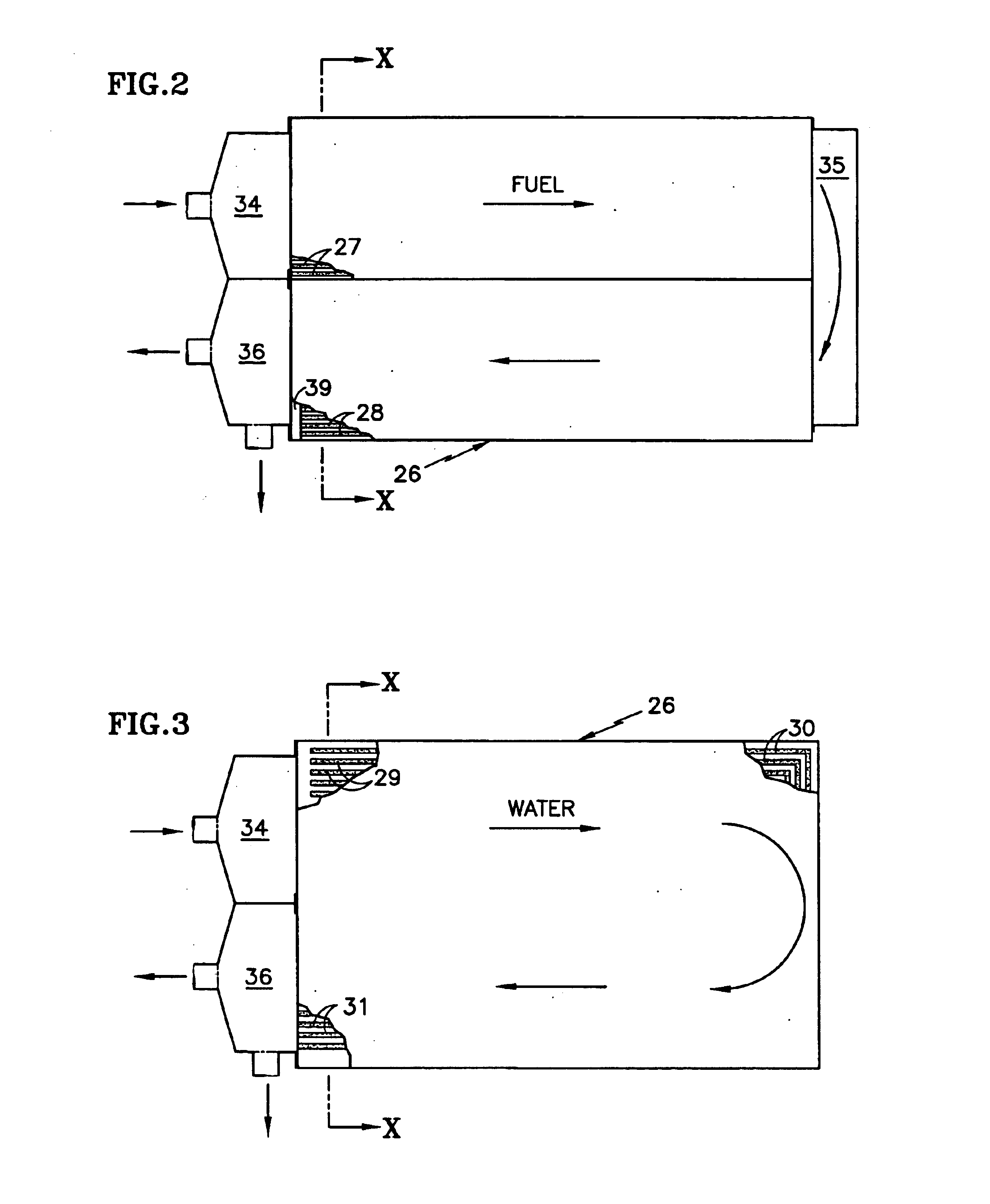Passive water management fuel cell
a fuel cell and water management technology, applied in the direction of cell components, cell component details, separation processes, etc., can solve the problems of fuel cell freezing in cold climates, fuel cell production with the proper size pores is extremely expensive, and the enhancement of one harms the other, so as to achieve the effect of convenient manufactur
- Summary
- Abstract
- Description
- Claims
- Application Information
AI Technical Summary
Benefits of technology
Problems solved by technology
Method used
Image
Examples
Embodiment Construction
Referring to FIG. 1, a fuel cell stack includes a plurality of fuel cells, each including a PEM 19, an anode substrate 20, with an anode catalyst (not shown) disposed between the membrane 19 and the substrate 20. A cathode catalyst (not shown) extends between the membrane 19 and a cathode substrate 21. A porous anode flow field plate 26 includes fuel reactant gas flow channels 27, 28 on the side thereof adjacent the anode substrate 20 and water flow channels 29-31 on the reverse side thereof. In the exemplary embodiment, as shown in FIG. 2, the fuel flow channels 27 run horizontally from a fuel inlet manifold 34 to a fuel turnaround manifold 35 and the fuel flow channels 28 run from the fuel turnaround manifold 35 to a fuel exit manifold 36. As seen in FIG. 3, the ends 29 of water management channels are dead ended in the region near the fuel inlet manifold 34, and form corners 30 at the opposite end of the fuel flow field plate 26 where they turn toward the other edge of the plate ...
PUM
| Property | Measurement | Unit |
|---|---|---|
| pressure | aaaaa | aaaaa |
| pressure | aaaaa | aaaaa |
| pressure | aaaaa | aaaaa |
Abstract
Description
Claims
Application Information
 Login to View More
Login to View More - R&D
- Intellectual Property
- Life Sciences
- Materials
- Tech Scout
- Unparalleled Data Quality
- Higher Quality Content
- 60% Fewer Hallucinations
Browse by: Latest US Patents, China's latest patents, Technical Efficacy Thesaurus, Application Domain, Technology Topic, Popular Technical Reports.
© 2025 PatSnap. All rights reserved.Legal|Privacy policy|Modern Slavery Act Transparency Statement|Sitemap|About US| Contact US: help@patsnap.com



